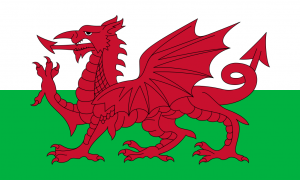Difference between revisions of "Language/Welsh/Grammar/Present-Continuous-Tense"
m (Quick edit) |
m (Quick edit) |
||
| Line 165: | Line 165: | ||
<span gpt></span> <span model=gpt-3.5-turbo></span> <span temperature=1></span> | <span gpt></span> <span model=gpt-3.5-turbo></span> <span temperature=1></span> | ||
==Other Lessons== | |||
* [[Language/Welsh/Grammar/Questions|Questions]] | |||
* [[Language/Welsh/Grammar/To-Be-and-To-Have|To Be and To Have]] | |||
* [[Language/Welsh/Grammar/Describing-People|Describing People]] | |||
* [[Language/Welsh/Grammar/Describing-Actions|Describing Actions]] | |||
* [[Language/Welsh/Grammar/Using-Prepositions|Using Prepositions]] | |||
* [[Language/Welsh/Grammar/Using-Conjunctions|Using Conjunctions]] | |||
* [[Language/Welsh/Grammar/0-to-A1-Course|0 to A1 Course]] | |||
* [[Language/Welsh/Grammar/Adjectives|Adjectives]] | |||
* [[Language/Welsh/Grammar/How-to-Use-Be|How to Use Be]] | |||
* [[Language/Welsh/Grammar/The-article|The article]] | |||
{{Welsh-Page-Bottom}} | {{Welsh-Page-Bottom}} | ||
Revision as of 21:21, 2 April 2023
Welsh Present Continuous Tense
The present continuous tense is used to describe ongoing actions happening at the moment of speaking or during a specific timeframe in the present. In Welsh, the present continuous tense is formed by combining the present tense of "bod" (to be) with the verb-noun form of the main verb.
Forming the Present Continuous Tense
The present continuous tense is formed by conjugating the present tense of the verb "bod" (to be) and combining it with the verb-noun of the main verb.
The present tense conjugation of "bod" is as follows:
| Person | Singular | Plural |
|---|---|---|
| rwyf yn | rydym yn | |
| rydw i'n | rwyt ti'n | |
| rydych chi'n | ||
| mae e/o hi'n | maen nhw'n |
Here are some examples of the present continuous tense in Welsh:
| Welsh | Pronunciation | English |
|---|---|---|
| Dw i'n darllen | doo ee'n DAHR-lehn | I am reading |
| Rydych chi'n siarad | RUD-ikh khi'n SHAH-rahd | You are talking |
| Mae hi'n ysgrifennu | myee heen us-GRIH-fenn-ee | She is writing |
Using the Present Continuous Tense
The present continuous tense is used to describe ongoing actions happening at the moment of speaking or during a specific timeframe in the present. It is also used to talk about events or situations that are changing or developing or to describe temporary actions or situations.
Actions Happening Right Now
The present continuous tense is often used to describe actions that are happening at the moment of speaking.
- Dw i'n bwyta cinio ar hyn o bryd. - I am eating lunch right now.
- Mae hi'n darllen llyfr. - She is reading a book.
Events or Situations That Are Changing or Developing
The present continuous tense can also be used to describe events or situations that are changing or developing over time.
- Mae'r tywydd yn newid. - The weather is changing.
- Rydych chi'n dysgu Cymraeg. - You are learning Welsh.
Temporary Actions or Situations
The present continuous tense can be used to describe temporary actions or situations that will soon come to an end.
- Dw i'n byw yn Llundain ar hyn o bryd. - I am living in London at the moment.
- Mae'r plant yn chwarae yn y parc. - The children are playing in the park.
Using "Hyn o Bryd" (At the moment) with the Present Continuous Tense
In Welsh, the phrase "hyn o bryd" is often used with the present continuous tense to indicate that the action is happening "at the moment". It can also be used to indicate that the situation is in a temporary state.
- Dw i'n darllen hyn o bryd. - I am reading at the moment.
- Mae e'n byw yn Llundain hyn o bryd. - He is living in London at the moment.
Conjugating the Present Continuous Tense
In Welsh, the present continuous tense is formed by using the verb-noun form of the main verb combined with the present tense of "bod".
The verb-noun is formed by adding the suffix "-io" to the root form of the verb.
Here are some examples:
- Darllen (to read) → darllenio (reading)
- Siarad (to talk) → siaradio (talking)
- Mynd (to go) → myndio (going)
Here is how the present continuous tense is formed using the verb "bod" and the verb-noun:
| Person | Bod | Verb-Noun |
|---|---|---|
| rwyf yn | darllenio | |
| rydw i'n | siaradio | |
| rydych chi'n | ||
| mae e/o hi'n | myndio |
Using "Ddim" (Not) with the Present Continuous Tense
To make a negative sentence in the present continuous tense, you need to add "ddim" before the present tense of "bod".
- Dw i ddim yn canu ar hyn o bryd. - I am not singing right now.
- Nid yw'r plant ddim yn chwarae. - The children are not playing.
Asking Questions with the Present Continuous Tense
To ask a question in the present continuous tense, you simply need to invert the subject pronoun and the present tense of "bod".
Here are some examples of questions in the present continuous tense:
- Wyt ti'n dysgu Cymraeg? - Are you learning Welsh?
- Mae'r plant yn chwarae? - Are the children playing?
Using Adverbs with the Present Continuous Tense
Adverbs are often used with the present continuous tense in Welsh to describe how the action is being performed or the extent to which it is being carried out.
Here are some examples of adverbs used with the present continuous tense:
- Dw i'n darllen yn syth. - I am reading straightaway.
- Mae e'n siarad yn swnllyd. - He is talking loudly.
- Mae'r Llywodraeth yn gweithio'n ddiflino. - The Government is working hard.
Further Resources
Congratulations! You have completed the lesson on the Present Continuous Tense in Welsh. If you want more practice or information, you can use the following resources:
- <a href="https://www.learn-welsh.net/">Learn Welsh</a>
- <a href="https://www.saysomethingin.com/welsh/course1">Say Something in Welsh</a>
- <a href="http://www.bbc.co.uk/wales/learning/learnwelsh/">BBC Wales - Learn Welsh</a>
Other Lessons
- Questions
- To Be and To Have
- Describing People
- Describing Actions
- Using Prepositions
- Using Conjunctions
- 0 to A1 Course
- Adjectives
- How to Use Be
- The article
